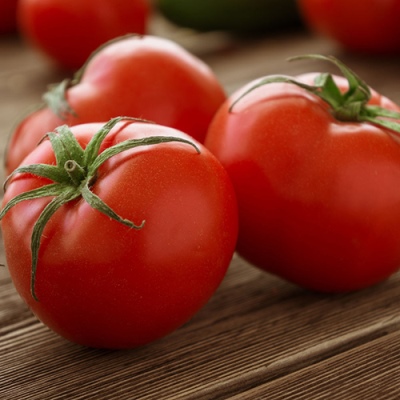
- Authors: Gavrish S.F., Morev V.V., Amcheslavskaya E.V. (LLC "Gavrish Breeding Firm")
- Year of approval: 1996
- Category: hybrid
- Growth type: determinant
- Appointment: fresh consumption, for whole fruit preservation
- Ripening period: mid-early
- Ripening time, days: 106-110
- Growing conditions: for film greenhouses, for closed ground, for greenhouses
- Marketability: high
- Transportability: good
Fans of growing delicious tomatoes in a greenhouse are advised to pay attention to the hybrid medium-early variety of Kostroma tomatoes, characterized by high yields and absolute unpretentiousness of agricultural technology.
Breeding history
Vegetable culture was created by a group of domestic breeders (E.V. Amcheslavskaya, V.V. Morev, and S.F. Gavrish) representing the Gavrish seed-growing agricultural company. The hybrid variety was entered into the State Register of the Russian Federation in 1996. The task of the specialists was to create a tomato with an early ripening period and with good taste and marketability. Recommended for growing indoors in the central regions of the country, from where the name of tomatoes was taken.
Description of the variety
The tomato bush Kostroma is a medium-sized plant of the determinant type, growing up to 200 cm. The plant is characterized by good thickening of light green foliage, a strong stem, a developed root system and intermediate inflorescences. The fruits are collected in beautiful clusters. Each brush forms 7–10 ovaries.
Despite the small number of new stepchildren appearing, regular pinching is required. In addition, experts recommend the formation of bushes in 1 stem. Pinching the crown of the central stem of the bush can be done when 10 brushes have formed on it.
The main qualities of the fruit
The Kostroma tomato has a flat-round shape (sometimes oval) with a slight ribbing surface. The color of ripe tomatoes is bright red, uniform. Unripe berries are light green in color. In one brush, tomatoes grow to the same size and shape.
Tomatoes belong to the category of large-fruited - the mass of the berry reaches 150 g. The peel of tomatoes is dense, smooth and shiny, absolutely not prone to cracking. Thanks to their dense peel, tomatoes are transportable and can be stored for a long time without losing their taste and presentation.
Taste characteristics
The tomato is declared as a dessert. The taste is dominated by sweetness, perfectly combined with light sourness. The flesh of the berry is dense, fleshy, moderately juicy, with a small amount of seeds. In section, a greenish spot at the base is noticeable. Tomatoes are universal, so they can be eaten fresh, processed, canned, salted. Tomatoes are especially good for whole-fruit canning.
Ripening and fruiting
The Kostroma hybrid represents a class of mid-early tomatoes. From the appearance of the first shoots to a ripe tomato on a branch, 106–110 days pass. Ripening in the plant is unusual: first, the lower brushes with fruits ripen, and then the upper ones. Ripening in the inflorescence occurs at the same time, so you can remove the berries with whole brushes. The most active fruiting phase occurs in July - August.
Yield
This variety is high-yielding.With proper agricultural technology, 4–4.5 kg of tomatoes can be removed from one bush.
The timing of planting seedlings and planting in the ground
The culture is grown by the seedling method. Sowing seedlings is performed 40 days before planting in the ground. The optimal time is considered to be the beginning of March.
The seed is planted in purchased soil for vegetable crops. To accelerate the emergence of seedlings, it is necessary to provide a greenhouse effect using polyethylene or glass. When sprouts appear, the seed boxes are set in a warm and well-lit area. The pick is performed at the stage of the appearance of one true sheet.
It is better to land on a permanent place in the second half of May, when the air warms up well.

Growing tomato seedlings is an extremely important process, because it largely depends on whether the gardener can harvest at all. All aspects must be taken into account, from seedbed preparation to planting in the ground.
Landing scheme
The planting density of bushes per 1 m 2 is 7-9 plants. The scheme of 40X60 cm is considered ideal for planting. Bushes are planted in a linear way or in a checkerboard pattern.

Growing and care
This type of tomato is recommended to be grown in cold and heated greenhouses. For this, the soil is prepared in advance, which is cleaned, fertilized and moistened. It is better to plant bushes on a cloudy day or in the evening.
Like all nightshade crops, Kostroma tomatoes need proper agricultural technology: watering, forming a bush into 1 stem, garter, removing stepchildren, feeding, loosening the soil, ventilation and measures to protect against pests and viruses.




A plant needs different micronutrients at each stage of growth. All fertilizers can be divided into two groups: mineral and organic. Folk remedies are often used: iodine, yeast, bird droppings, eggshells.
It is important to observe the rate and period of feeding. This also applies to folk remedies and organic fertilizers.
Disease and pest resistance
The plant has a high immunity, so many diseases are not scary to it, for example, the tobacco mosaic virus, cladosporiosis, fusarium wilting. Insecticides will help fight pests (whiteflies, aphids, bears).


Resistant to adverse weather conditions
The culture is resistant to many negative factors: high air humidity, sharp temperature fluctuations, prolonged drought.
Growing regions
Due to the fact that tomatoes are grown in greenhouses, the region for growth does not matter much - the tomato adapts in any climatic zone.
Review overview
A variety with a long history Kostroma is massively grown both by gardeners and farmers on an industrial scale. The culture is characterized as non-capricious in care, giving stable and abundant yields. In addition, tomatoes have good taste.

























































































